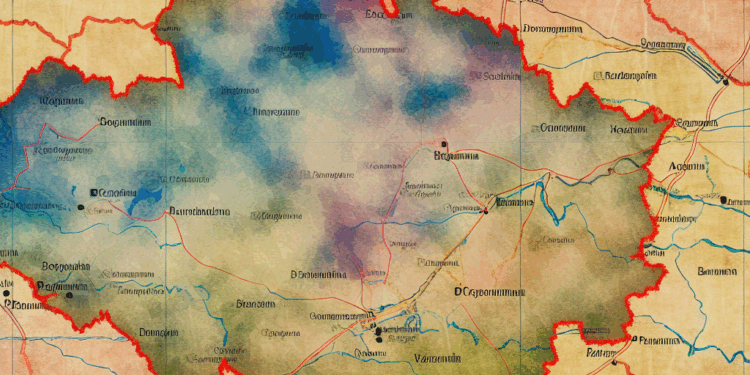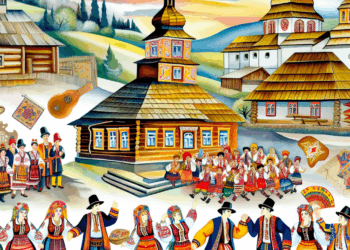Bukovyna is a historical and geographical region located in north-western Ukraine and north-eastern Romania. Changes in the borders and political status of Bukovina in the 20th century reflect the complex and dynamic history of the region. Major milestones concerning territorial changes occurred in 1775, 1918 and 1940, which shaped the modern political map and perception of the region.
1. Accession of Bukovina to the Austrian Empire (1775)
In 1775, as a result of the defeat of the Ottoman Empire in the Austrian-Turkish War, the Austrian Empire under the leadership of Empress Maria Theresa annexed Bukovina. This move was part of a broader Austro-Turkish and border security policy. Administratively, the Bukovina region was integrated into Galicia and Lodomeria.
Becoming part of the Austrian Empire transformed the economic and cultural life of the region. The Austrian administration introduced various reforms, including the development of infrastructure, education and the judicial system. This triggered the active development of cities such as Chernivtsi, which became a cultural and administrative centre. At this time, Romanians, Ukrainians, Jews and Germans began to settle actively in the region, leading to the formation of a multi-ethnic society.
2. Period of Romanian rule (1918)
After the First World War and the collapse of the Austro-Hungarian Empire in 1918, Bukovina was ceded to Romania under the terms of the Treaty of Saint-Germain. This event triggered an active movement among the local population seeking self-determination.
Rumania took a number of measures to integrate Bukovina, introducing Romanian culture and language, which provoked mixed reactions among different ethnic groups. The Romanian state apparatus promoted the construction of new schools, the establishment of cultural institutions and the introduction of Romanian language into administrative life. However, the increased Romanian national policy also stratified the population and created tensions between ethnic groups, particularly between Romanians and Ukrainians.
3. Accession to the USSR (1940)
In 1940, in the context of the outbreak of World War II, the Soviet Union annexed the northern part of Bukovina, essentially an area that was largely Romanian in the autumn of 1940. This decision was justified as a necessity to protect local Ukrainians and as a reflection of the nations’ decision on self-determination.
The USSR side argued that the annexation was a reflection of the historical and cultural connection of the Ukrainian population to the Soviet Union. However, the decision caused significant changes in the lives of the inhabitants of the region, including politicians, which led to profound social and economic reforms.
During the war in 1941, the region was occupied by Germany and Romania until 1944, when Soviet troops reoccupied the region. Subsequently, in 1947, the official status of Bukovina was confirmed at the Paris Peace Conference, which confirmed the annexation in international relations.
4. Current borders and status of Bukovina
With the end of World War II and the establishment of a new order in Europe, Bukovyna remained within the Ukrainian SSR. After the collapse of the Soviet Union in 1991, Bukovyna became part of independent Ukraine as Chernivtsi Oblast.
An important role in the modern perception of Bukovyna is played by its multi-ethnic composition, which remains today. Ethnic Ukrainians, Romanians, Moldovans and Russians make up the population of the region, which forms a specialised cultural landscape.
As a consequence of historical events, public opinion about the region’s identity varies greatly. For many locals, Bukovina is identified as part of Romania, based on historical and cultural ties. However, due to political realities and formal affiliation with Ukraine, this desire for identification remains a very complex and often debated issue both locally and internationally.
Conclusion
The history of Bukovina is an illustration of the complex processes related to national identity, inter-ethnic relations and changes in political status over the last three centuries. From 1775 to the present day realities, the territorial changes and annexations of the region show not only the impact of geopolitical dynamics, but also underlying cultural and social processes. The question of Bukovina’s belonging to both Romania and Ukraine continues to be relevant, being a subject of debate and academic analysis, as well as an important part of the identity of the local population.








